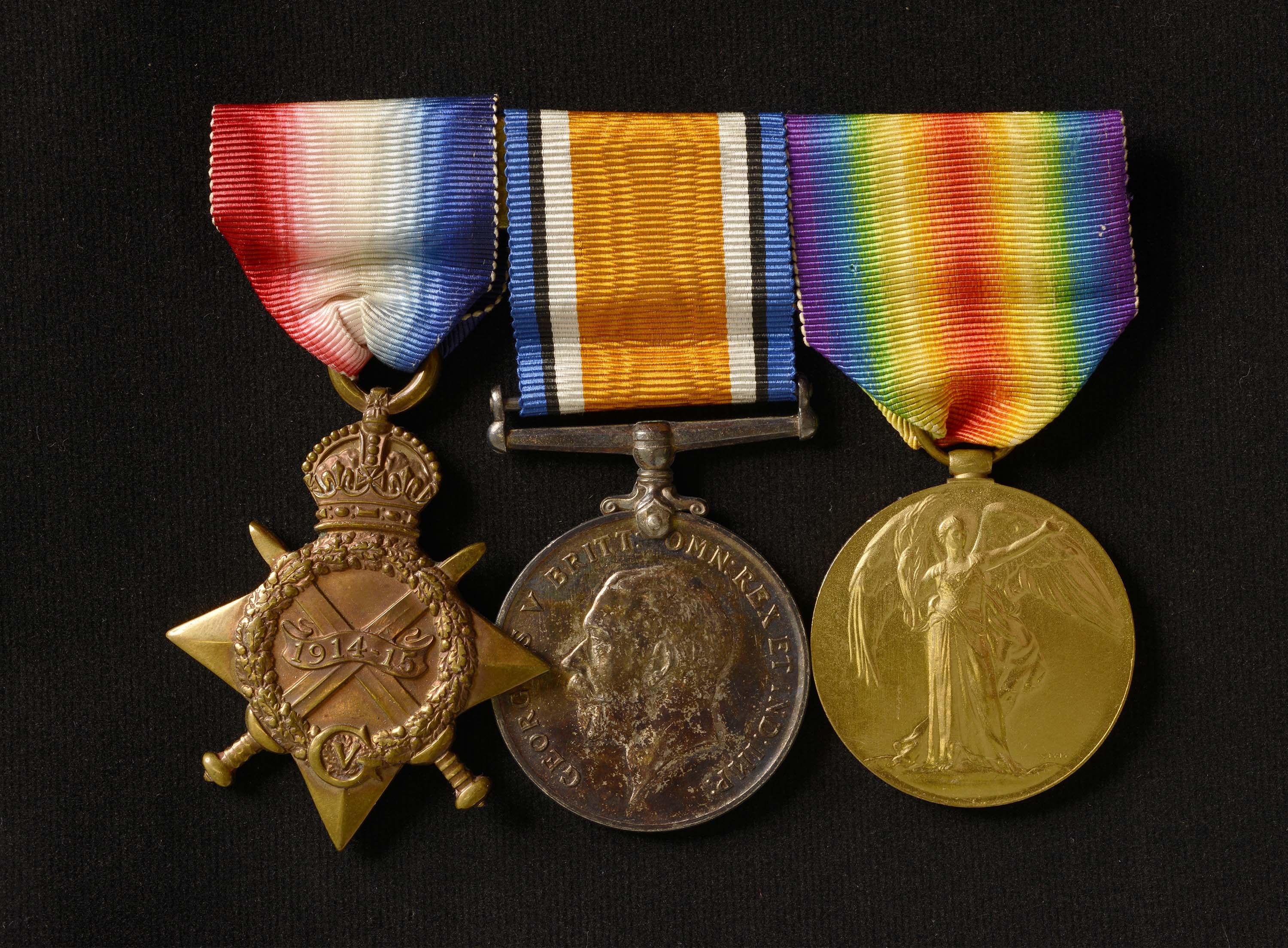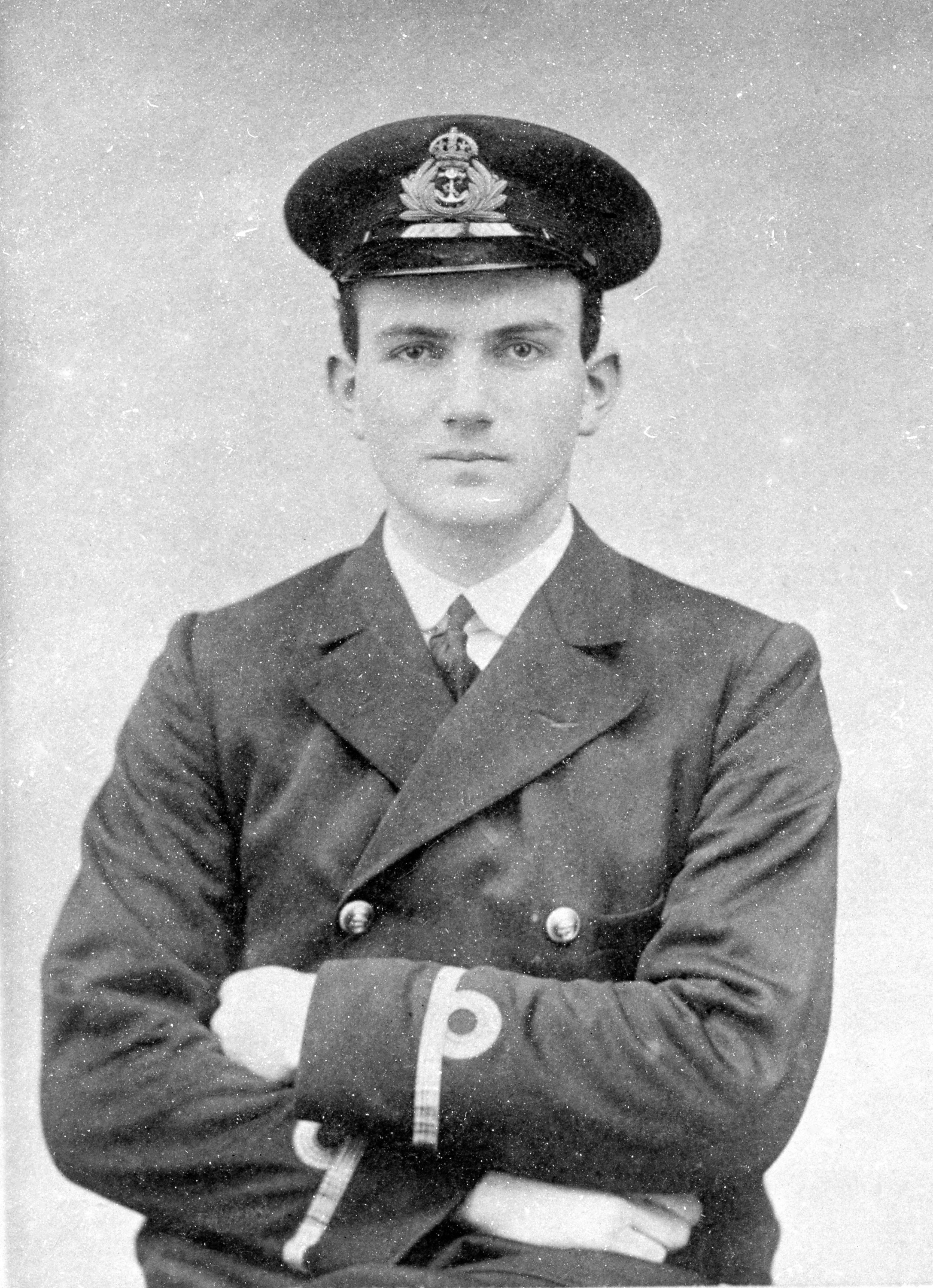

Display No. 17E
BARKER, Harold Studholme
Harold Barker came from two well-known Canterbury pioneer families. He was a cousin to Captain Alexander David Boyle and, like him, was sent to England to join the Royal Navy as a ‘colonial cadet’. In Barker’s case, he signed up just days before his 13th birthday. After completing his Boy service and training, he passed out as a Midshipman in 1911. Barker briefly served in HMS Britannia as part of the Home Fleet before being posted to HMS Drake, a flagship of the Australian station in December 1911. When responsibility for the Australian station passed to the Royal Australian Navy in 1913, Barker returned to the United Kingdom to serve in HMS Dreadnought.
During the First World War, Barker served entirely within British waters. He was posted to HMS Forward based at the Humber estuary and then to HMS Meteor. Meteor was part of the Harwich Force which was on standby for the Battle of Jutland, although they did not take part. From late 1916 until the end of the war, Barker served in the battleship HMS Warspite based at Scapa Flow.
In 1921, Barker returned to New Zealand aboard HMS Chatham. However, he was invalided out of service due to poor eyesight in 1923. As a Commander on the Royal Navy retired list, he offered his services to the Navy Office in Wellington during the Second World War and was appointed as an Intelligence Officer. He was later made Director of Naval Intelligence and served until 1945. He was described during his naval service as a reserved and quiet man, and was a keen and talented sportsman in his younger years, representing the Navy in rugby and boxing.
Awarded medal(s)
Medal Description [Left to Right]:
The 1914-1915 Star
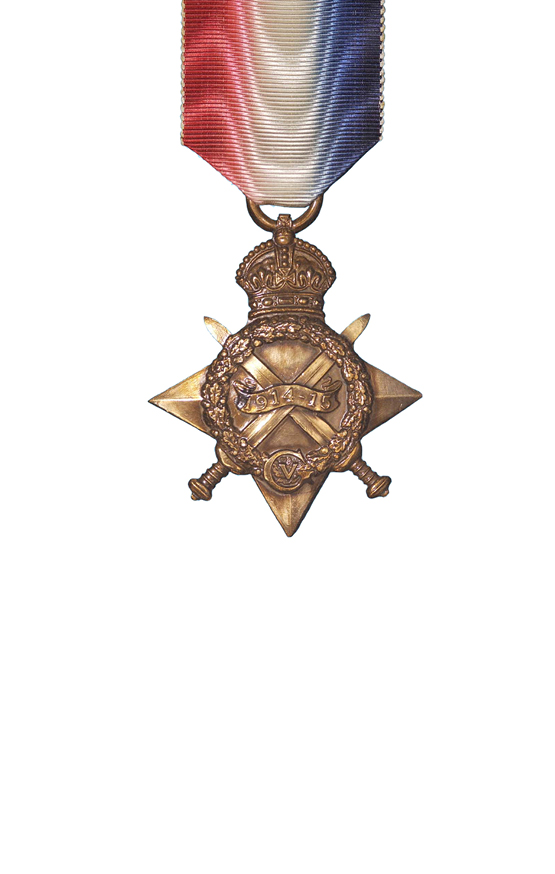
The 1914-15 Star was awarded to servicemen and servicewomen who served in the First World War between 5 August 1914 and 31 December 1915 in any “theatre of war”, provided they had not qualified for the 1914 Star. This included service at Gallipoli between 25 April 1915 and 31 December 1915, service in Egypt between 5 November 1914 and 31 December 1915, and service during the capture of German Samoa on 29 August 1914. Those eligible for the medal must have “served on the establishment of a unit in a theatre of war” during the relevant dates of operations in that area. The ribbon’s red, white and blue shaded and watered bands represent the flag of the United Kingdom.
The British War Medal
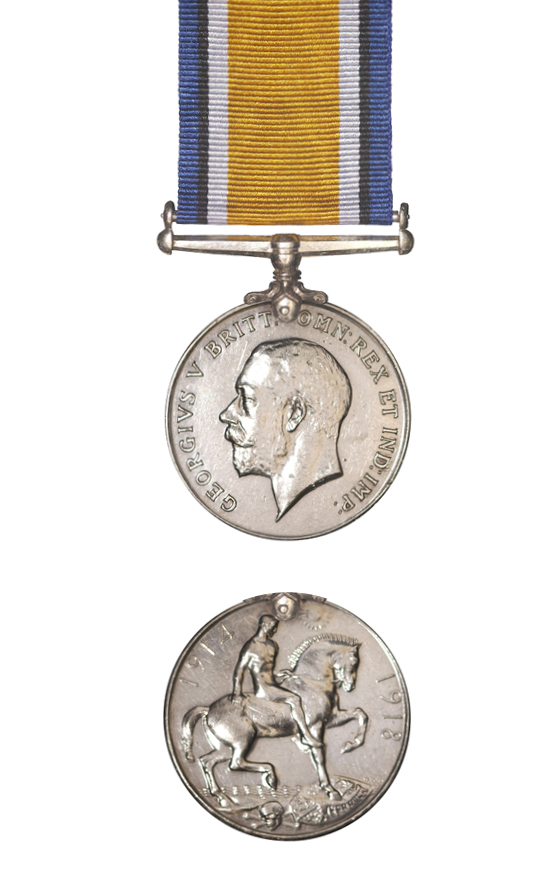
The British War Medal was instituted in 1919 to recognise the successful conclusion of the First World War (1914-1918). Its coverage was later extended to recognise service until 1920, recognising mine clearing operations at sea, and participation in operations in North and South Russia, the eastern Baltic, Siberia, the Black Sea and the Caspian Sea.
The Victory Medal
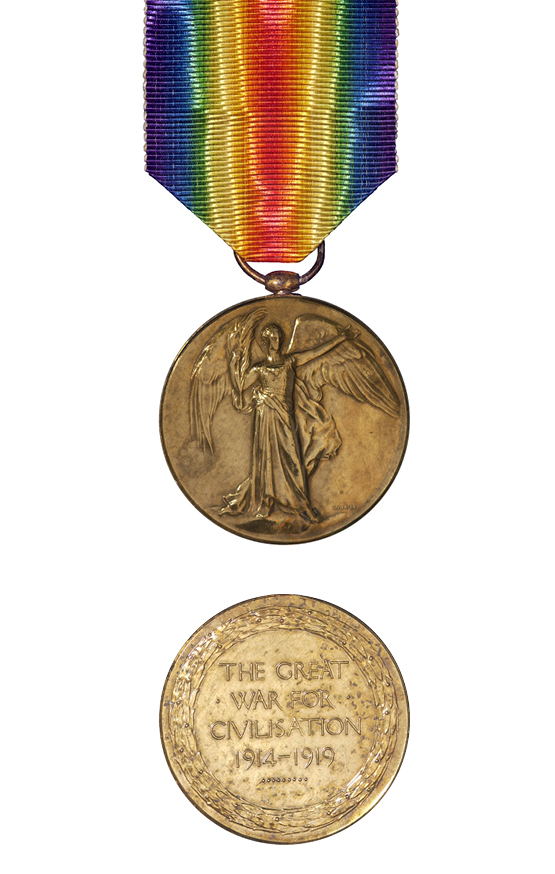
The Victory Medal was awarded in the First World War to all those who had already qualified for the 1914 Star or the 1914-15 Star, and to most persons who had already qualified for the British War Medal. The Victory Medal was awarded to all New Zealand troops serving overseas, except for those who arrived in Samoa after 30 August 1914 and those serving in Great Britain only. It has a unique double rainbow ribbon.
A bronze spray of oak leaves on the medal ribbon denotes that the recipient was Mentioned in Despatches during the period that the medal recognises. To be Mentioned in Despatches a member of the armed forces has had their name mentioned in an official report, written by a superior officer, and sent to a higher command. The report would describe the individual’s gallant or meritorious action in the face of the enemy.

